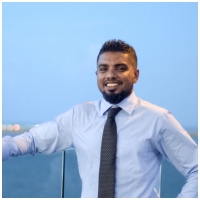
Ahmed Arshad
Director
Avia Maldives
The topic of southern tourism and our aspirations for a more balanced distribution of tourism development have been ongoing for over a decade. It is now time to reassess previous strategies and restart efforts with a fresh approach. What we need is a targeted subsidy program for at least two to three years to stimulate growth in these lesser-explored regions. Additionally, we should reevaluate the departure tax per person in these areas to incentivize airlines and operators to explore and expand services to the south. If airlines are able to operate multi-sector flights within the Maldives easily, it would be a significant advantage. I'm not referring to simply transporting passengers from Point A to Point B within the country; rather, I mean that if an airline, such as X Airlines from Dubai, could efficiently offer multi-sector routes-e.g., some passengers traveling to VRMM and others to VRMG it would greatly enhance operational flexibility and attractiveness for airlines. Investing in infrastructure, such as establishing a seaplane base in the southern Maldives, is crucial-whether through government subsidies or as a Public-Private Partnership (PPP). Enhancing accessibility and increasing bed inventory will make the south more attractive to airlines and tourists. Furthermore, I propose allocating a small percentage of the tax revenue generated from south tourism to support marketing efforts. This fund could be used to co-market the region in collaboration with Visit Maldives, helping to boost visibility and tourist influx. South Maldives offers unique attractions, including Fuvahmulah Shark Diving, Mud Baths, Addu Nature Park, the Royal Sunken Navy Dive Site, and additional resort beds across Addu Atoll, Gaaf Dhaal, and Gaaf Alif. With targeted initiatives, I believe achieving significant growth in southern tourism is not only possible but well within reach.

